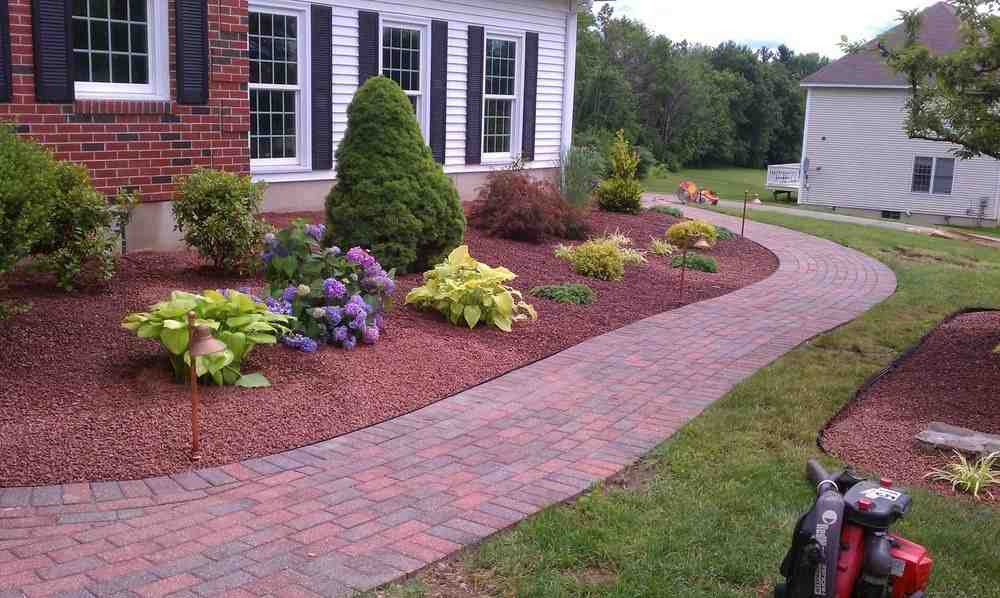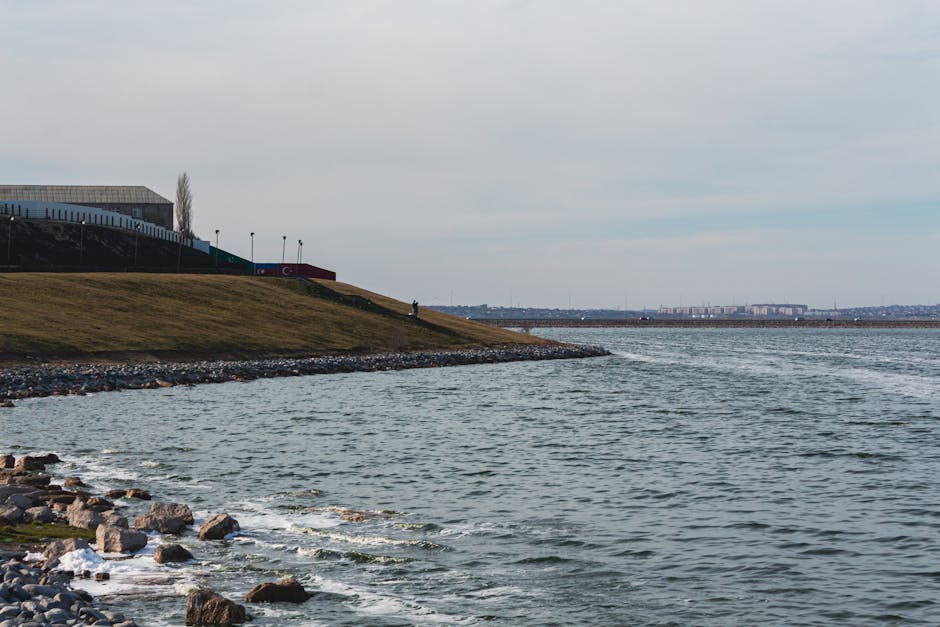Low Maintenance Commercial Landscaping: Top Ideas 2024
The Impact of Low Maintenance Commercial Landscaping
Low maintenance commercial landscaping plays a crucial role in defining the first impression customers get of your business. A beautifully maintained exterior not only enhances your company’s image but also directly impacts property value and tenant satisfaction.
First impressions are lasting. Imagine arriving at a hotel with poorly maintained landscaping—trees hanging over walkways and overgrown bushes. Odds are, you’ll think twice before booking a room there. In contrast, a well-manicured landscape immediately communicates professionalism and attention to detail.
Here are some key benefits of well-maintained landscaping:
- Enhanced Property Value: Aesthetic appeal can increase the market value of your property.
- Improved Tenant Satisfaction: Attractive surroundings boost tenant retention and satisfaction.
- Reduced Maintenance Costs: Opting for low-maintenance solutions, like native plants and hardscapes, can save time and money in the long run.
These quick points highlight why investing in low maintenance commercial landscaping is essential for any business.
Understanding Low Maintenance Commercial Landscaping
When it comes to low maintenance commercial landscaping, the goal is to create a beautiful, functional outdoor space that requires minimal upkeep. This can be achieved through various methods such as xeriscaping, using native species, planting evergreen plants, mulching, and considering grass alternatives.
Xeriscaping
Xeriscaping is a landscaping method designed to reduce water usage. This is particularly useful in arid regions. By utilizing drought-resistant plants like succulents and cacti, you can create a visually appealing landscape that thrives with minimal watering. Adding mulch and hard surfaces like gravel or stone can further reduce maintenance.
Native Species
Native plants are adapted to the local climate and soil conditions, making them low-maintenance. They require less water, fertilizer, and pest control compared to non-native species. For example, in Illinois, plants like pussytoes and wild ginger are excellent choices. In humid regions, moss can serve as a unique and low-maintenance ground cover.
Evergreen Plants
Evergreen trees and shrubs provide year-round greenery, reducing the need for seasonal planting. Conifers like pine and spruce are popular choices in colder climates, while tropical hardwoods and boxwoods work well in warmer areas. Evergreen plants are resilient and require less frequent pruning, making them ideal for low-maintenance landscaping.
Mulching Techniques
Mulch is a simple yet effective way to retain soil moisture, prevent weed growth, and improve soil health. Organic mulches like wood chips and bark decompose over time, enriching the soil. Inorganic options like gravel and rubber mulch offer long-lasting solutions. Mulching around plants and trees creates a clean, professional look with minimal effort.
Grass Alternatives
Maintaining a lush lawn can be resource-intensive. Grass alternatives like creeping mazus, clover fields, and moss require less water and mowing. In northern areas, winter-resistant plants like pussytoes and wild ginger can provide beautiful ground coverage. In southern states like Texas, evergreen options such as creeping mazus are popular.
By incorporating these low-maintenance landscaping techniques, you can create a stunning outdoor space that requires minimal upkeep, saving you both time and money. This approach not only enhances the aesthetic appeal of your property but also promotes sustainability.
Next, we will explore hardscaping solutions that complement these low-maintenance landscaping techniques.
Top Low Maintenance Landscaping Ideas for Commercial Properties
Xeriscaping
Xeriscaping is all about designing your landscape to minimize water usage. This is perfect for areas with limited rainfall or strict water regulations. By using drought-resistant plants like succulents, Creeping Junipers, and Coneflowers, you can create a beautiful landscape that requires minimal watering. Adding mulch and hard surfaces like stone paths or gravel beds helps retain moisture and reduce water evaporation.
Native Plants
Choosing native plants ensures your landscape thrives with minimal effort. Plants like Eastern Redbud, Oakleaf Hydrangea, and Creeping Phlox are well-suited to local climates and require less upkeep. These plants are naturally resistant to local pests and diseases, making your garden more resilient. Many regions even have native plant programs to support your landscaping efforts.
Evergreen Trees and Shrubs
Evergreen trees and shrubs provide year-round greenery, reducing the need for replanting and constant care. Options like conifers, tropical hardwoods, and boxwoods offer consistent beauty. Boxwoods, especially varieties like ‘Northern Charm’ and ‘Green Gem,’ are easy to maintain and add a tidy look to your property.
Mulching Techniques
Mulching is a game-changer for low-maintenance landscaping. It helps with moisture retention and weed prevention, ensuring your plants stay healthy with less effort. Use a barrier cloth under the mulch to further prevent weed growth. You can also create visually appealing patterns with mulch to enhance the aesthetic of your landscape.
Grass Alternatives
Reducing grass areas in favor of low-maintenance ground covers can save a lot of time and effort. Plants like pussytoes, wild ginger, moss, and creeping mazus offer excellent coverage with minimal care. For larger areas, consider clover fields which are durable and require less mowing than traditional grass.
Next, we will explore hardscaping solutions that complement these low-maintenance landscaping techniques.
Hardscaping Solutions for Low Maintenance
Incorporating hardscaping solutions into your commercial landscape can significantly reduce maintenance efforts while enhancing the overall appeal of your property. Let’s dive into some effective hardscaping options:
Stone Walkways
Stone walkways are not only visually appealing but also practical. They create clear paths for foot traffic, reducing wear on your lawn and minimizing the need for constant upkeep. Materials like flagstone or pavers are durable and can withstand heavy use.
Patios
A well-designed patio offers a functional space for outdoor activities and gatherings. Patios made from materials like concrete, stone, or brick require minimal maintenance compared to grassy areas. They provide a clean, polished look and can be customized to fit the aesthetic of your commercial property.
Retaining Walls
Retaining walls serve a dual purpose: they prevent soil erosion and add an architectural element to your landscape. These walls can be constructed from stone, concrete blocks, or timber. They are particularly useful for properties with varying elevations, as they help create leveled areas for planting or seating.
Concrete Paths
Concrete paths are a low-maintenance option for creating walkways and connecting different areas of your property. They are durable, easy to clean, and can be designed to complement your landscape. Concrete paths also reduce the growth of weeds and require less upkeep compared to natural paths.
Meditative Areas
Creating meditative areas with hardscaping elements like benches, stone circles, or small fountains can provide a peaceful retreat for visitors and employees. These spaces require little maintenance and can be enhanced with minimalistic landscaping, such as gravel or mulch, to maintain a serene environment.
By integrating these hardscaping solutions into your commercial landscape, you can achieve a beautiful, functional, and low-maintenance outdoor space. Next, let’s explore how automated irrigation systems can further simplify your landscaping maintenance.
Automated Irrigation Systems
Automated irrigation systems are a game-changer for low maintenance commercial landscaping. They help keep your landscape healthy without the hassle of manual watering. Let’s dive into how these systems work and their benefits.
Programmed Watering
Automated irrigation systems can be set to water your landscape at specific times. This means you can water your plants early in the morning or late in the evening when evaporation rates are low. This not only saves water but also ensures your plants get the best hydration.
For example, a well-programmed system can be set to water flower beds more frequently than grassy areas, tailoring the watering schedule to each area’s needs.
Specific Areas
One of the most significant advantages of automated irrigation systems is their ability to target specific areas. With zone-based watering, different parts of your property can receive customized hydration schedules. Shady areas can get less water compared to sunny spots, preventing overhydration and root rot.
This kind of precision ensures that each plant gets the right amount of water, promoting healthier growth and reducing waste.
Consistent Moisture
Maintaining consistent moisture levels is crucial for plant health. Automated systems can be equipped with rain sensors that adjust the watering schedule based on real-time weather conditions. This ensures your landscape gets the right amount of water, even during unexpected rain showers.
Consistent moisture helps plants grow faster and more robustly, creating a lush and vibrant landscape.
Reduced Monitoring
Automated irrigation systems significantly reduce the need for manual monitoring. Once set up, these systems require minimal oversight. You can focus on other aspects of property management, knowing your landscape is well-cared for.
Regular maintenance checks, like inspecting for leaks or malfunctioning components, are still necessary but are far less time-consuming than manual watering.
By incorporating automated irrigation systems into your commercial landscape, you ensure efficient and effective watering, which saves time, reduces water usage, and promotes healthier plants. Now, let’s move on to answering some frequently asked questions about low maintenance commercial landscaping.
Frequently Asked Questions about Low Maintenance Commercial Landscaping
What is the most low-maintenance landscaping?
Ground cover plants are a top choice for low maintenance. They spread out to cover the soil, reducing the need for weeding and watering. Examples include moss, creeping mazus, and wild ginger.
Perennials like Coneflowers and Azaleas return each year with minimal care. They are perfect for borders and flower beds.
Evergreens provide year-round greenery. Boxwoods and Fire Chief globe arborvitae are excellent options that require little upkeep.
Ornamental grasses such as Carex pansa are hardy, need little water, and add movement to your landscape.
Drought-tolerant plants like Creeping Junipers and Coneflowers thrive in harsh conditions and need minimal watering.
Gravel and artificial turf can replace traditional grass, eliminating mowing and reducing water use.
Mulch helps retain soil moisture and suppress weeds, making it an essential component in low-maintenance landscaping.
What is the least expensive backyard landscaping?
Mulch alternatives like pine needles or bark chips are cost-effective and reduce maintenance.
Repurposed materials such as old bricks or stones can create unique pathways and borders without breaking the bank.
Vertical gardening uses walls or fences to grow plants, saving space and reducing ground maintenance.
Functional gardens with herbs or vegetables provide beauty and utility, often requiring less maintenance than ornamental plants.
Natural ground covers like clover fields or creeping mazus eliminate the need for mowing and offer a lush, green look.
Fire pits made from repurposed stones or bricks add a focal point and require no maintenance.
Trees like fast-growing oaks or maples provide shade and require minimal care once established.
What is the best low-maintenance landscape in Florida?
Native plants are well-adapted to the local climate, requiring less water and care. Examples include Sable Palm and native grasses.
Azaleas and violets thrive in Florida’s climate and require minimal upkeep.
Bahia grass and centipede grass are hardy, drought-tolerant grasses that need less water and mowing.
Zoysia grass is another excellent choice for Florida, as it is resistant to drought and pests.
By choosing the right plants and materials, you can create a beautiful, low-maintenance landscape that fits your budget and environment.
Conclusion
In summary, low-maintenance commercial landscaping offers numerous benefits. It reduces upkeep costs, conserves water, and enhances the aesthetic appeal of your property. By incorporating xeriscaping, native plants, evergreens, effective mulching techniques, and grass alternatives, you can create a stunning landscape that requires minimal effort to maintain.
At Dube Property Maintenance & Hardscaping, we specialize in tailoring landscaping solutions to meet your specific needs. Our year-round services ensure that your commercial property looks its best in every season. With over 25 years of experience, our professional team is committed to delivering top-quality results with meticulous attention to detail.
Ready to transform your commercial landscape into a low-maintenance masterpiece? Contact us today for a consultation and discover how we can help you achieve a beautiful and hassle-free outdoor space.
By choosing Dube Property Maintenance & Hardscaping, you’re not just investing in your property. You’re investing in peace of mind, knowing that your landscape is in expert hands.





